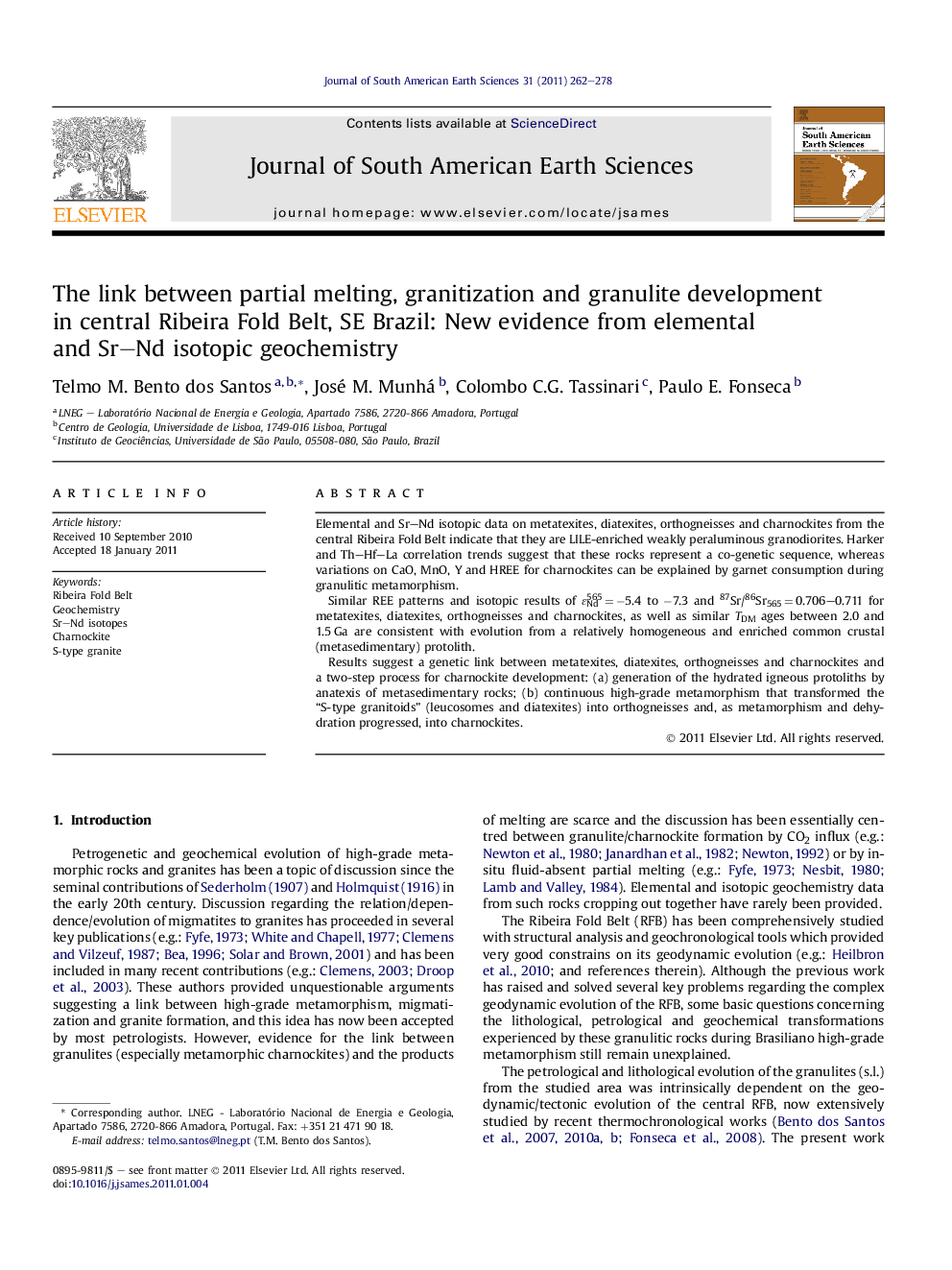| Article ID | Journal | Published Year | Pages | File Type |
|---|---|---|---|---|
| 4682649 | Journal of South American Earth Sciences | 2011 | 17 Pages |
Elemental and Sr–Nd isotopic data on metatexites, diatexites, orthogneisses and charnockites from the central Ribeira Fold Belt indicate that they are LILE-enriched weakly peraluminous granodiorites. Harker and Th–Hf–La correlation trends suggest that these rocks represent a co-genetic sequence, whereas variations on CaO, MnO, Y and HREE for charnockites can be explained by garnet consumption during granulitic metamorphism.Similar REE patterns and isotopic results of ɛNd565 = −5.4 to −7.3 and 87Sr/86Sr565 = 0.706–0.711 for metatexites, diatexites, orthogneisses and charnockites, as well as similar TDM ages between 2.0 and 1.5 Ga are consistent with evolution from a relatively homogeneous and enriched common crustal (metasedimentary) protolith.Results suggest a genetic link between metatexites, diatexites, orthogneisses and charnockites and a two-step process for charnockite development: (a) generation of the hydrated igneous protoliths by anatexis of metasedimentary rocks; (b) continuous high-grade metamorphism that transformed the “S-type granitoids” (leucosomes and diatexites) into orthogneisses and, as metamorphism and dehydration progressed, into charnockites.
► Diatexites, orthogneisses and charnockites show Harker and Th-Hf-La correlation trends. ► They show similar REE patterns, Sr-Nd results and TDM ages (2.0 – 1.5 Ga). ► They have a genetic link and evolved from an enriched crustal metasedimentary protolith. ► High grade metamorphism formed diatexites by the anatexis of metasediments. ► Charnockites formed by long-term dehydration of orthogneisses and diatexites.
